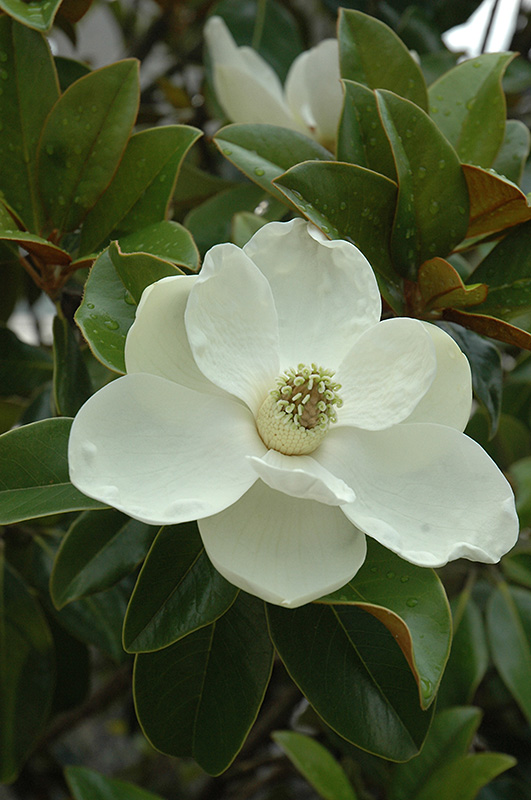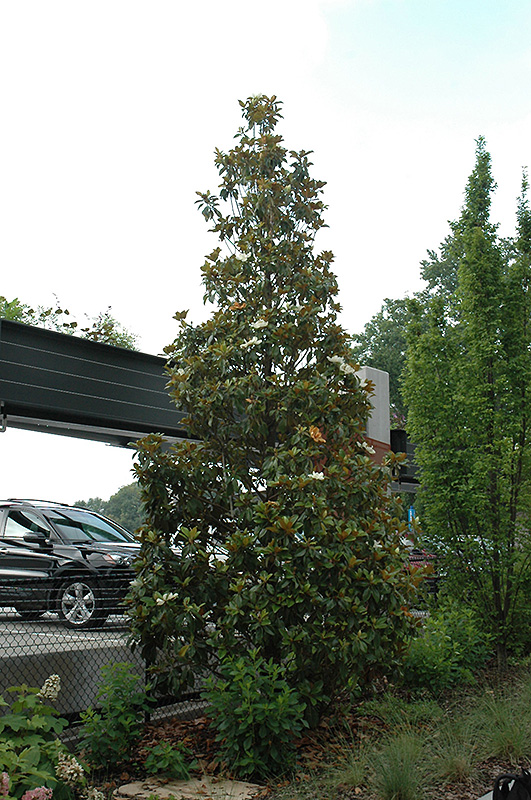Magnolia, Bracken's Brown Beauty Magnolia grandiflora 'Bracken's Brown Beauty' Height: 30 feet Spread: 20 feet
Sunlight:
Hardiness Zone: 6a Other Names: Southern Magnolia Description: A beautiful flowering accent tree for smaller home landscapes, smothered in showy and fragrant white cup-shaped flowers in spring through summer; large glossy leaves with brown undersides as the name implies. Needs protection from strong winds. Ornamental Features Magnolia, Bracken's Brown Beauty is smothered in stunning fragrant white cup-shaped flowers held atop the branches from mid spring to early summer. It has dark green foliage with brown undersides. The large pointy leaves turn coppery-bronze in the fall, which persists throughout the winter. The fruits are showy red pods displayed from early to late fall. Landscape Attributes Magnolia, Bracken's Brown Beauty is an evergreen tree with a shapely oval form. Its relatively coarse texture can be used to stand it apart from other landscape plants with finer foliage. This is a relatively low maintenance tree, and should only be pruned after flowering to avoid removing any of the current season's flowers. Deer don't particularly care for this plant and will usually leave it alone in favor of tastier treats. It has no significant negative characteristics. Magnolia, Bracken's Brown Beauty is recommended for the following landscape applications; Planting & Growing Magnolia, Bracken's Brown Beauty will grow to be about 30 feet tall at maturity, with a spread of 20 feet. It has a high canopy of foliage that sits well above the ground, and should not be planted underneath power lines. As it matures, the lower branches of this tree can be strategically removed to create a high enough canopy to support unobstructed human traffic underneath. It grows at a medium rate, and under ideal conditions can be expected to live for 70 years or more. This tree does best in full sun to partial shade. It does best in average to evenly moist conditions, but will not tolerate standing water. This plant should be periodically fertilized throughout the active growing season with a specially-formulated acidic fertilizer. It is not particular as to soil type, but has a definite preference for acidic soils. It is somewhat tolerant of urban pollution, and will benefit from being planted in a relatively sheltered location. Consider applying a thick mulch around the root zone in winter to protect it in exposed locations or colder microclimates. This is a selection of a native North American species. Special Attributes Magnolias are not toxic plants. They are also Deer Resistant to being eaten, but some deer like to use them as a back scratchers.![]()
![]()
![]()
![]()
![]()
![]()
![]()
![]()
![]()
![]()
![]()
![]()


